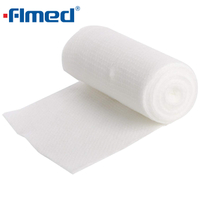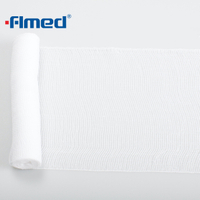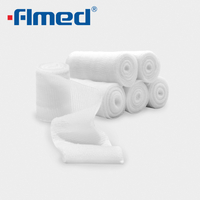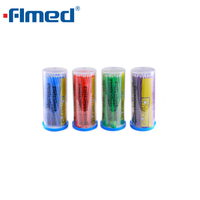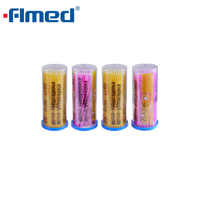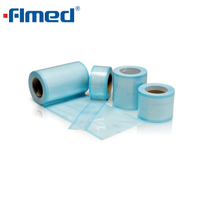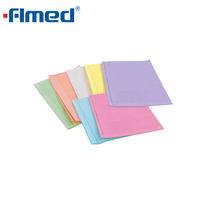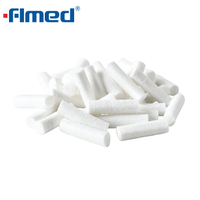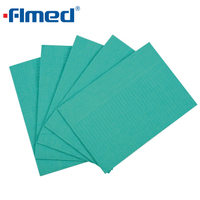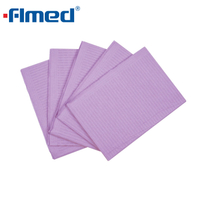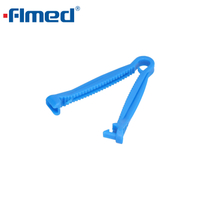
Injuries are a common occurrence in our daily lives, and knowing how to provide proper support is crucial for a quick and effective recovery. One popular method of injury support is through the use of crepe bandages. In this article, we will guide you through the art of applying crepe bandages, starting with understanding their purpose. In Section 1, we will explore the various benefits and uses of crepe bandages, from providing compression to reducing swelling. Moving on to Section 2, we will delve into the proper techniques for applying these bandages, ensuring that you have a firm and secure fit that promotes healing. Finally, in Section 3, we will discuss the essential care and maintenance tips to keep your crepe bandages in optimal condition, ensuring their longevity and effectiveness. Whether you are a healthcare professional or a concerned individual, mastering the art of applying crepe bandages will empower you to provide the best support for injury recovery.
Section 1: Understanding the Purpose of Crepe Bandages
Crepe bandages are an essential medical tool that serves various purposes in wound management and injury prevention. Understanding the purpose of crepe bandages is crucial for both medical professionals and individuals who may need to use them.
One of the primary purposes of crepe bandages is to provide compression and support to injured or weakened body parts. When applied correctly, these bandages exert pressure on the affected area, which helps reduce swelling and inflammation. This compression also provides stability to the injured limb or joint, preventing further damage and promoting faster healing.
Moreover, crepe bandages are commonly used in the treatment of sprains and strains. These types of injuries often occur due to sudden twisting or stretching of ligaments or muscles. By wrapping a crepe bandage around the affected area, individuals can immobilize the injured limb and minimize unnecessary movement. This immobilization not only alleviates pain but also aids in the healing process.
Additionally, crepe bandages can be utilized in the management of venous leg ulcers. These ulcers are open wounds that develop on the lower legs and occur due to poor blood circulation. When applied correctly, crepe bandages can help improve blood flow, reduce swelling, and promote the healing of these ulcers. The elastic nature of crepe bandages ensures a snug fit, preventing the bandage from slipping or causing discomfort.
Furthermore, crepe bandages are often used in sports and physical activities to prevent injuries. Athletes and fitness enthusiasts frequently employ these bandages to provide additional support to joints and muscles, reducing the risk of sprains and strains. The elasticity of crepe bandages allows for a full range of motion while offering the necessary stability and protection.
Section 2: Proper Techniques for Applying Crepe Bandages
Crepe bandages are commonly used in the medical field to provide support and compression to injured or strained muscles, ligaments, and joints. These bandages are made of a stretchable and breathable material that allows for flexibility and comfort during use. However, it is essential to know the proper techniques for applying crepe bandages to ensure maximum effectiveness and promote healing.
When applying a crepe bandage, the first step is to clean and dry the affected area thoroughly. This helps prevent any infection and ensures that the bandage adheres properly to the skin. It is crucial to remove any dirt, debris, or moisture from the area before proceeding.
Next, it is essential to start the application at the furthest point from the heart. For example, if applying a crepe bandage to the leg, begin at the foot and work your way up towards the knee or thigh. This technique helps with blood circulation and reduces swelling.
To begin the actual wrapping process, hold the end of the bandage firmly and make an anchor wrap around the affected area. This anchor wrap secures the bandage in place and provides a starting point for the subsequent wraps. Be sure not to wrap the bandage too tightly, as this can restrict blood flow and cause discomfort.
As you continue wrapping, overlap the previous layer by about half its width. This overlapping technique ensures that the bandage stays in place and provides adequate compression. It is crucial to maintain consistent tension throughout the wrapping process for optimal support. However, avoid pulling the bandage too tightly, as this can lead to circulation problems.
When reaching the end of the bandage, secure it with clips or tape. This helps to keep the bandage in place and prevents it from unraveling. It is important to ensure that the bandage is secure but not too tight. The individual should be able to move the affected area comfortably without feeling restricted.
After applying the crepe bandage, it is essential to monitor the area regularly. Check for any signs of swelling, discoloration, or discomfort. If any of these symptoms persist or worsen, consult a healthcare professional for further evaluation and guidance.
Section 3: Care and Maintenance of Crepe Bandages
Crepe bandages are widely used in medical settings to provide support and compression to injured or strained limbs. These bandages are made from a stretchable and breathable material that allows for ease of movement while providing the necessary support. To ensure the longevity and effectiveness of crepe bandages, proper care and maintenance are crucial.
First and foremost, it is important to clean crepe bandages regularly to prevent the buildup of dirt, sweat, and bacteria. Handwashing is the preferred method of cleaning, as it allows for gentle yet thorough cleaning. Use mild soap or detergent and lukewarm water to gently wash the bandage. Avoid using harsh chemicals or bleach, as they can damage the elasticity and stretchability of the material.
After washing, it is important to rinse the bandage thoroughly to remove any soap residue. Squeeze out excess water gently, without wringing or twisting the bandage, as this can cause stretching or damage. It is recommended to air-dry the bandage by laying it flat on a clean surface or hanging it to dry. Avoid exposure to direct sunlight or high heat, as this can weaken the fabric and affect its elasticity.
In addition to regular cleaning, it is important to inspect crepe bandages for any signs of wear and tear. Check for fraying edges, loose threads, or any damage to the fabric. If any damage is found, it is advisable to replace the bandage to ensure proper support and compression. Regular inspection will help identify any issues early on and prevent further damage or discomfort.
Proper storage is also essential in maintaining the quality of crepe bandages. Store them in a clean and dry environment, away from direct sunlight or moisture. Avoid folding or creasing the bandage excessively, as this can affect its elasticity and effectiveness. It is advisable to store crepe bandages in a resealable bag or container to protect them from dust and dirt.
Conclusion
Crepe bandages have multiple uses in wound management, injury prevention, and recovery. They provide compression, support, and reduce swelling. Proper technique is crucial for their effectiveness, including cleaning and drying the affected area, starting at the furthest point from the heart, using an anchor wrap, overlapping the bandage, and securing it properly. Taking care of crepe bandages is also important for their longevity and effectiveness, which includes regular cleaning, proper storage, and regular inspection. By following these guidelines, crepe bandages can promote healing and aid in the recovery process.

 English
English
